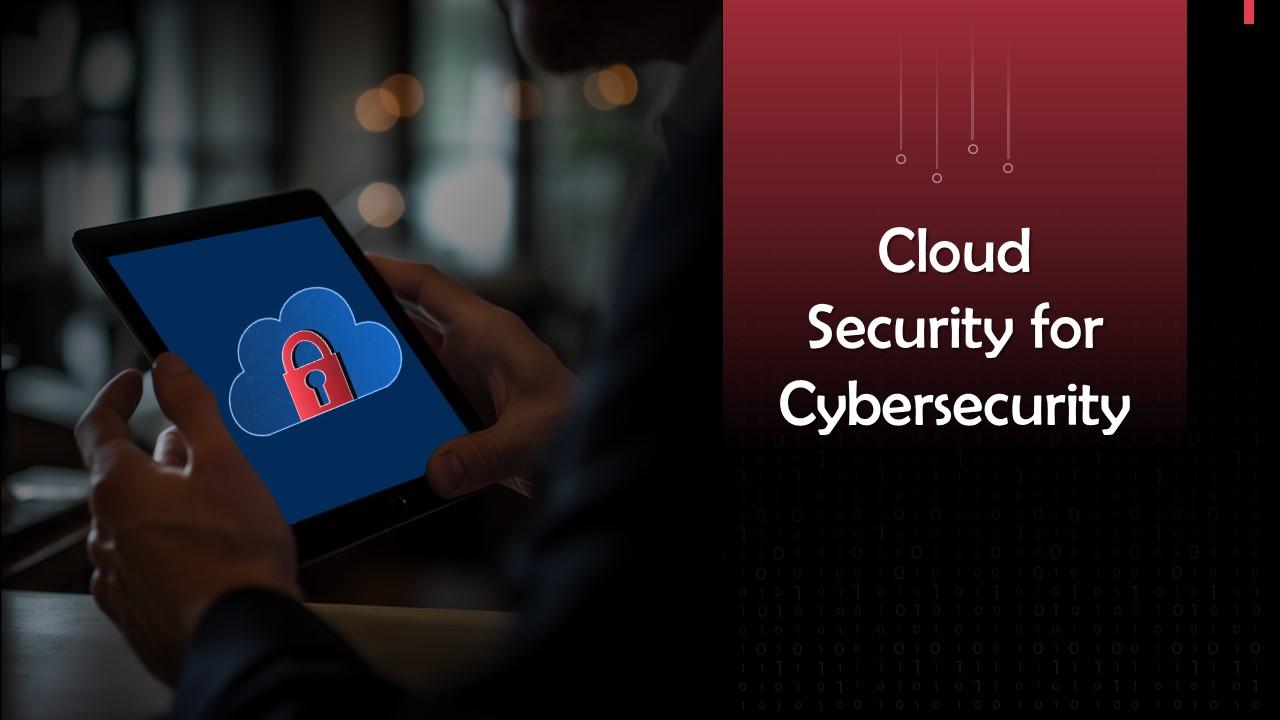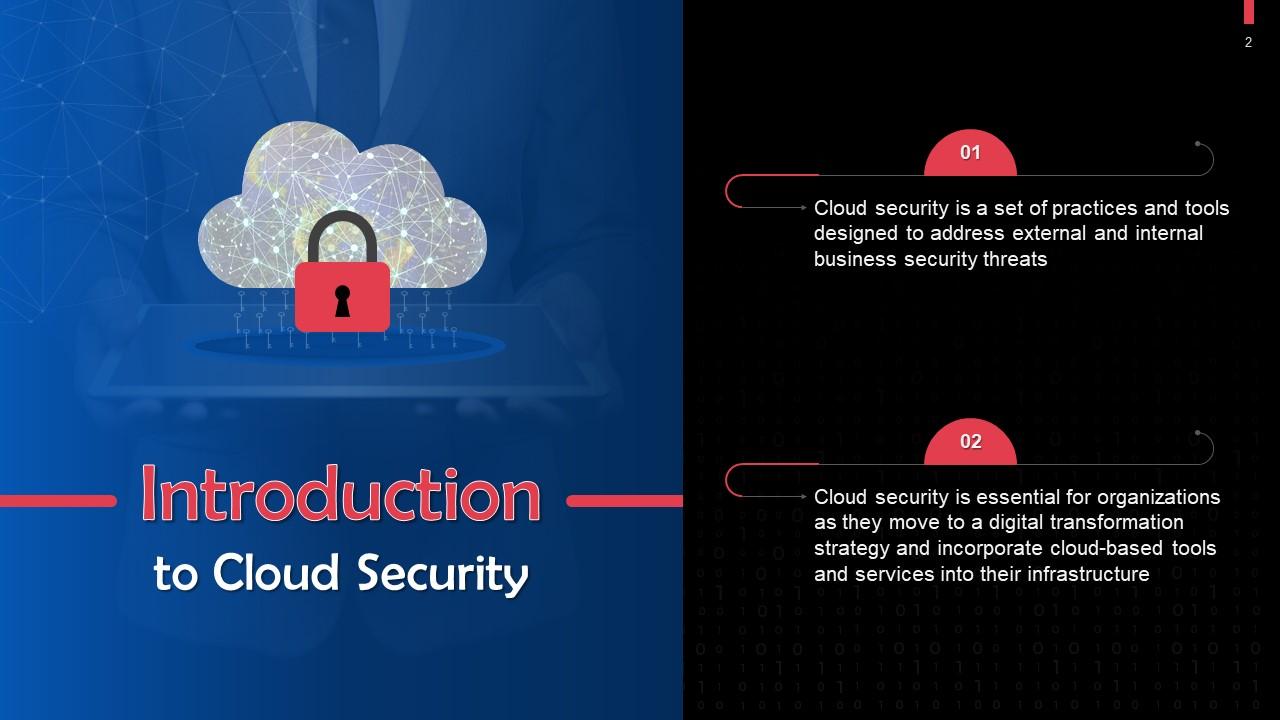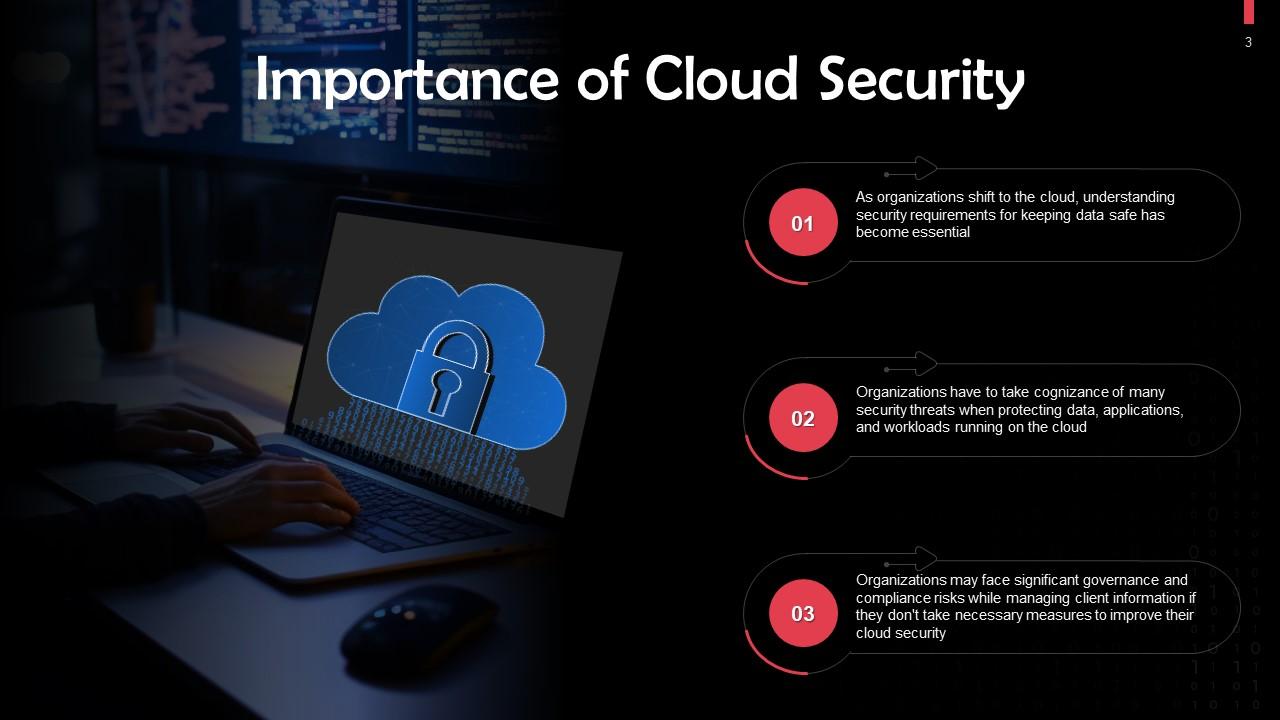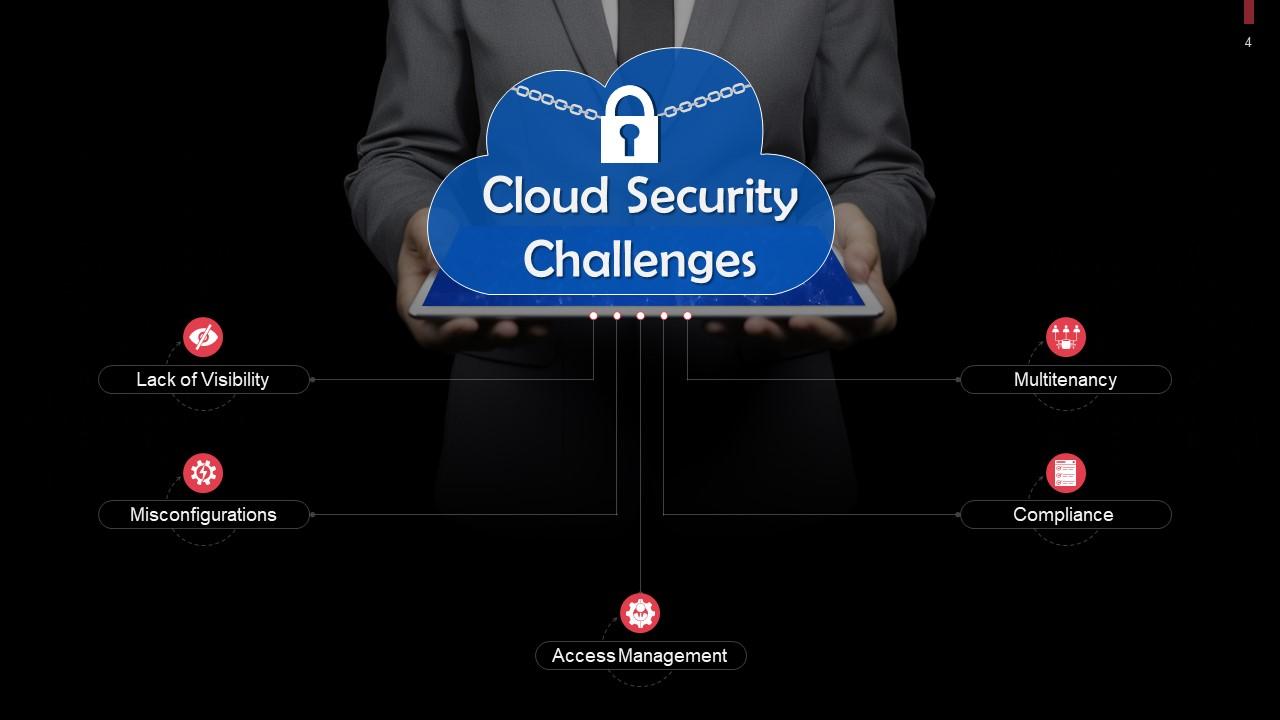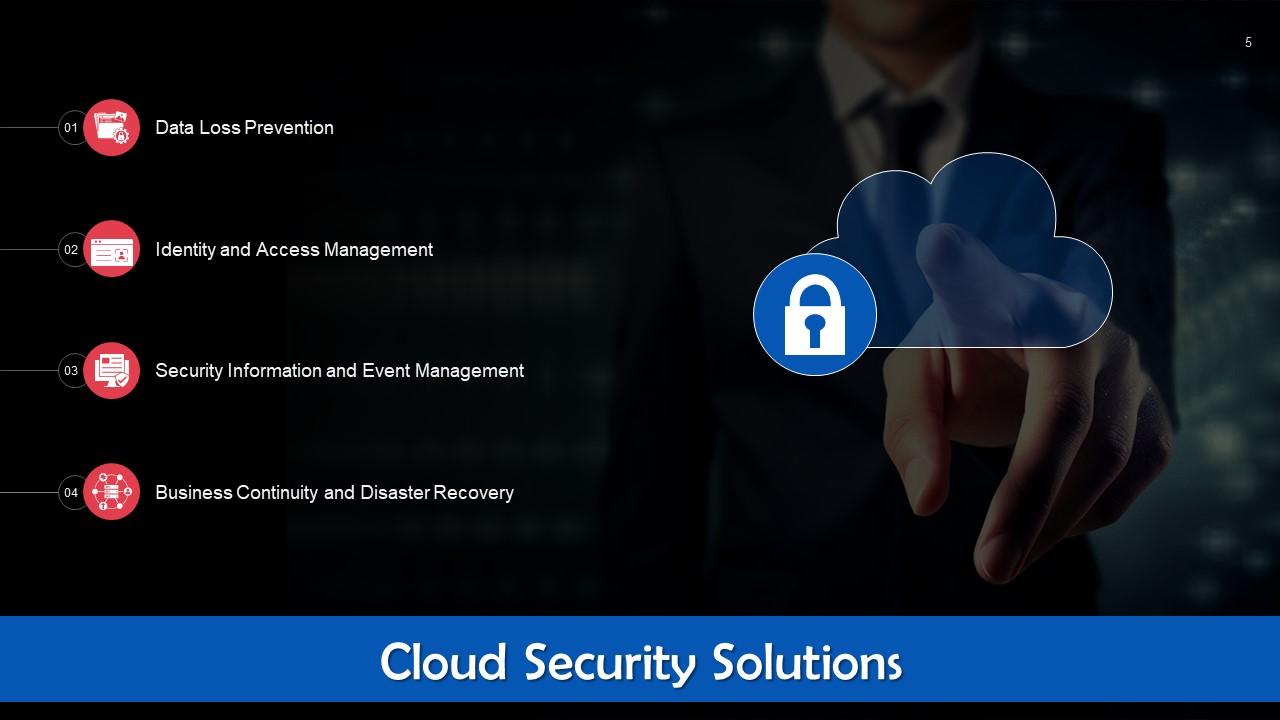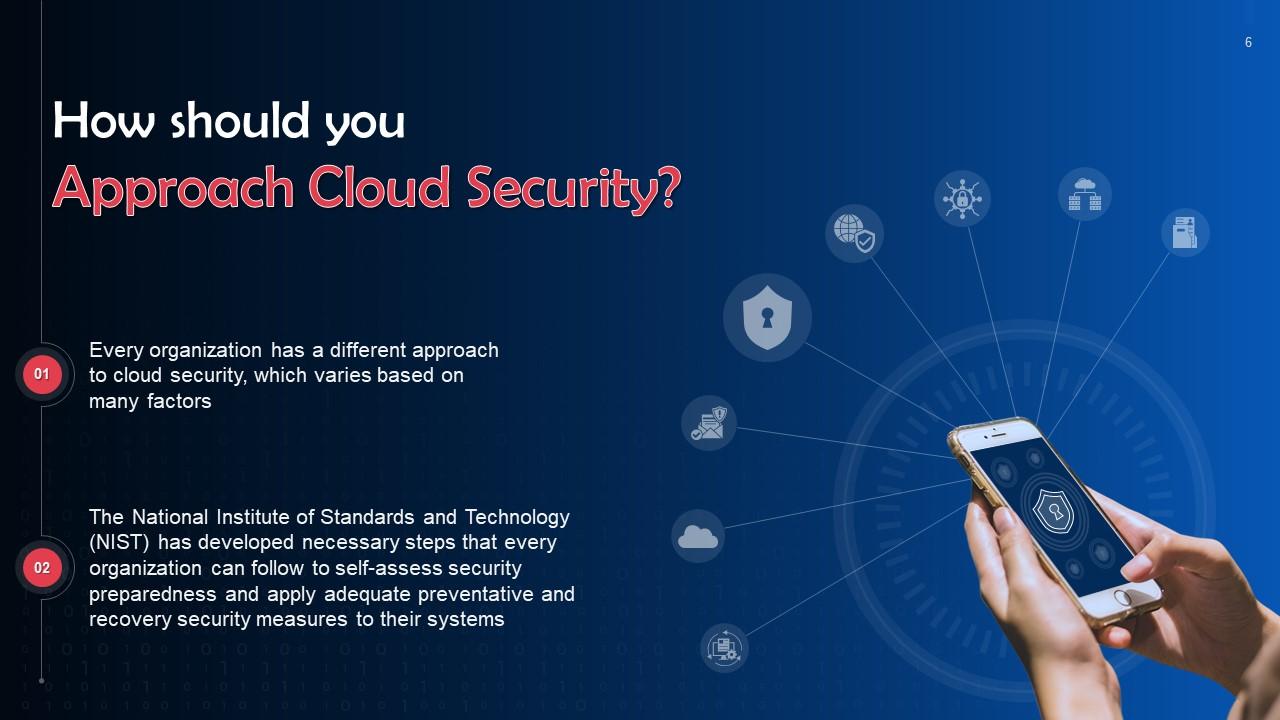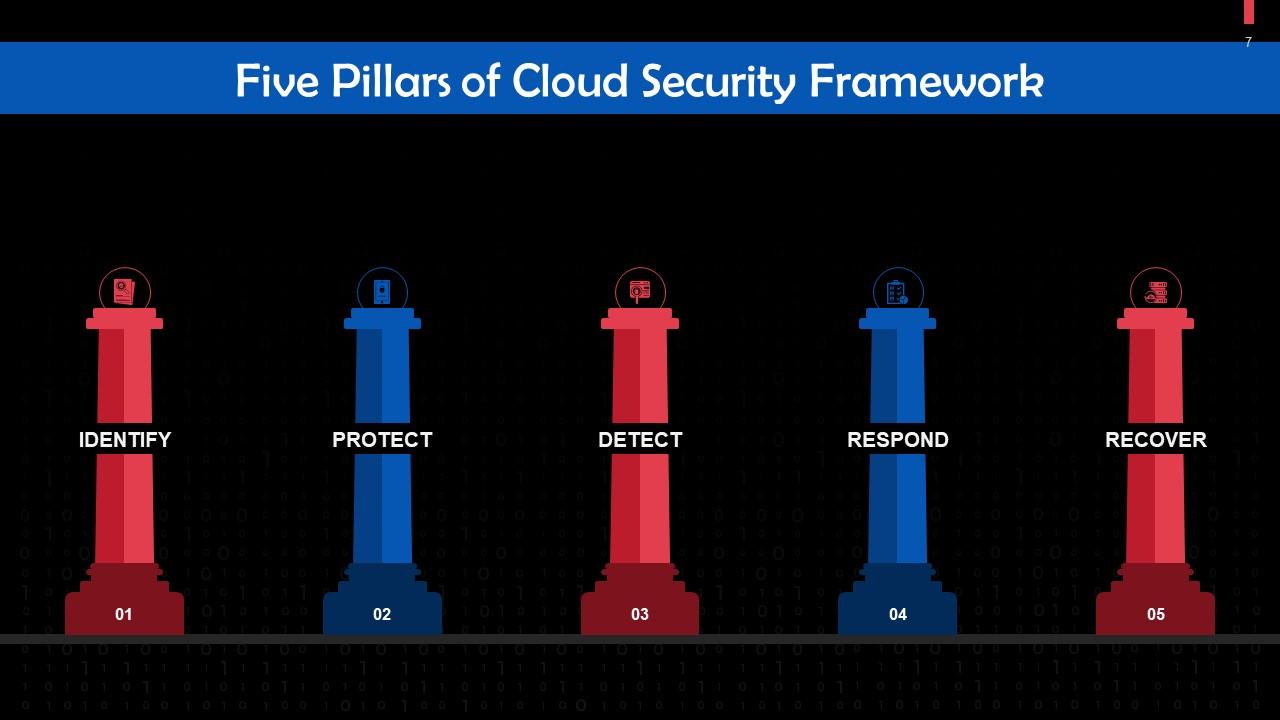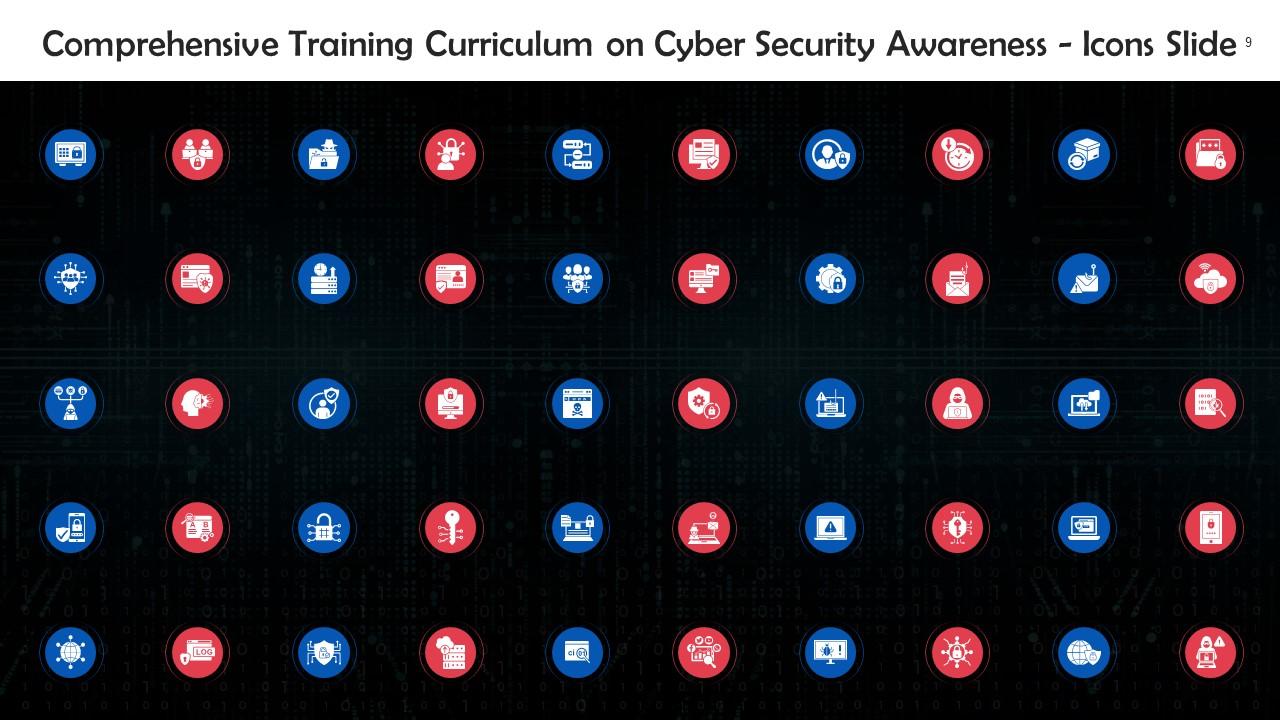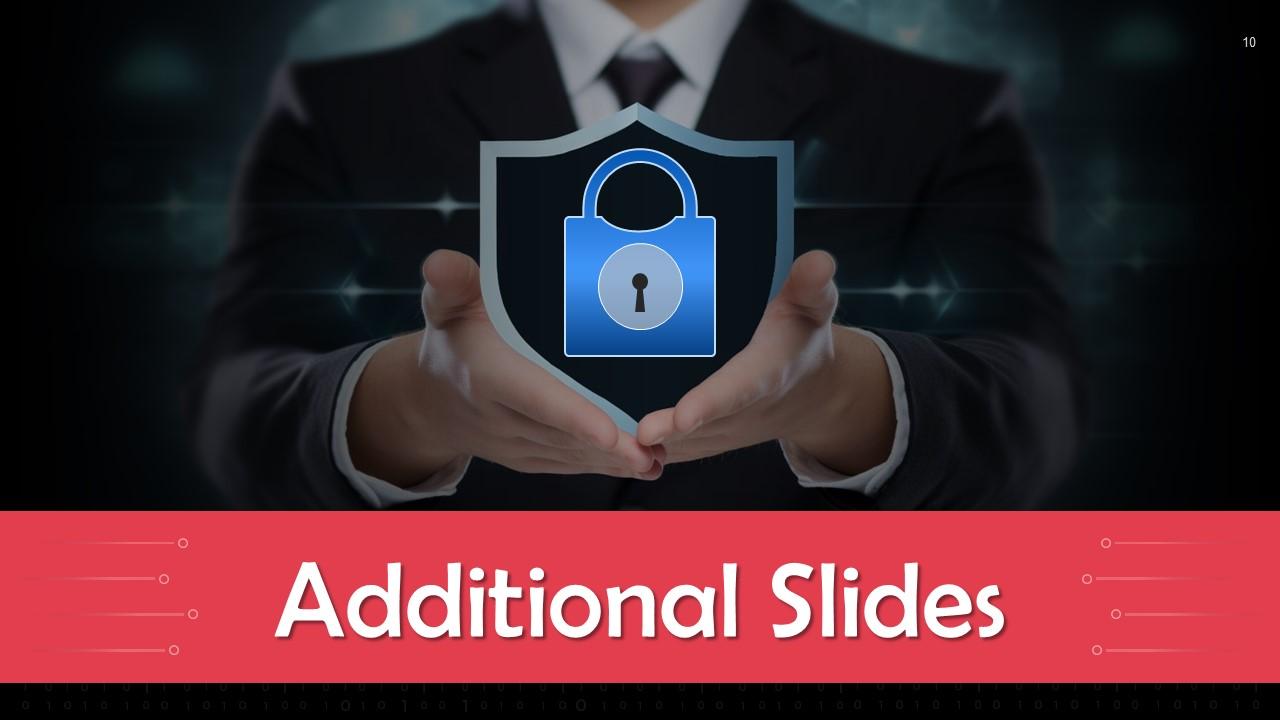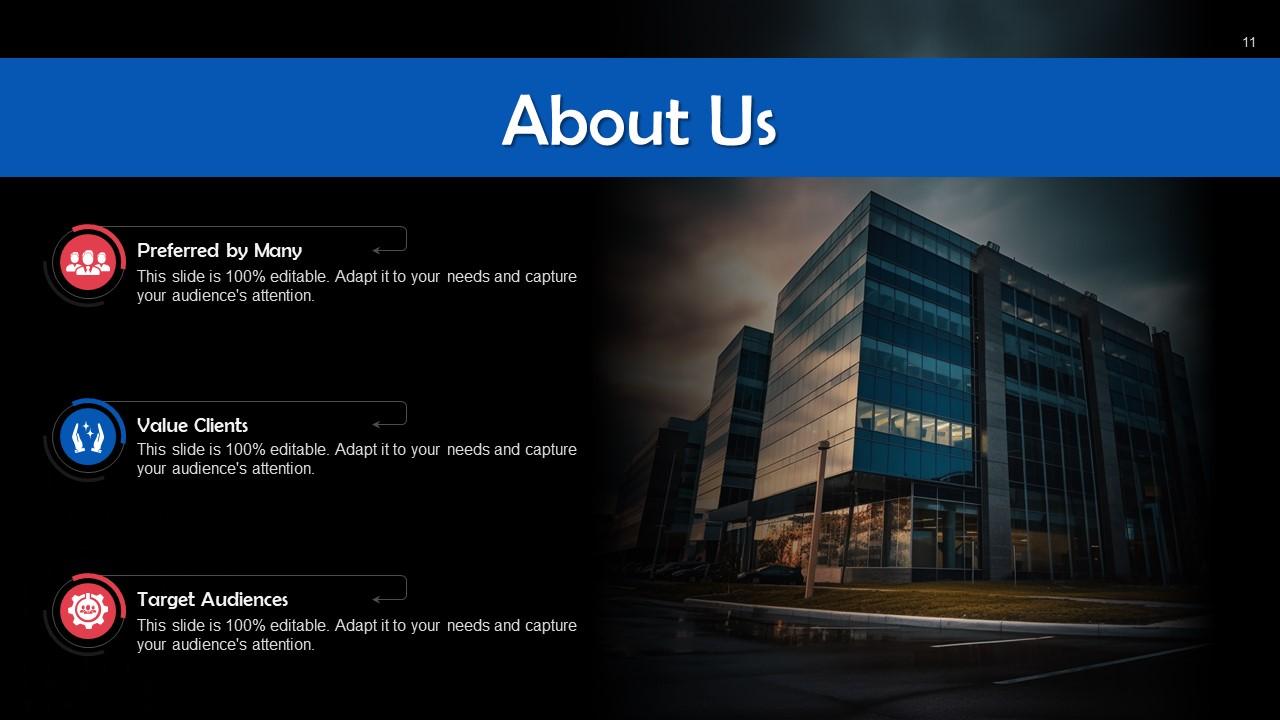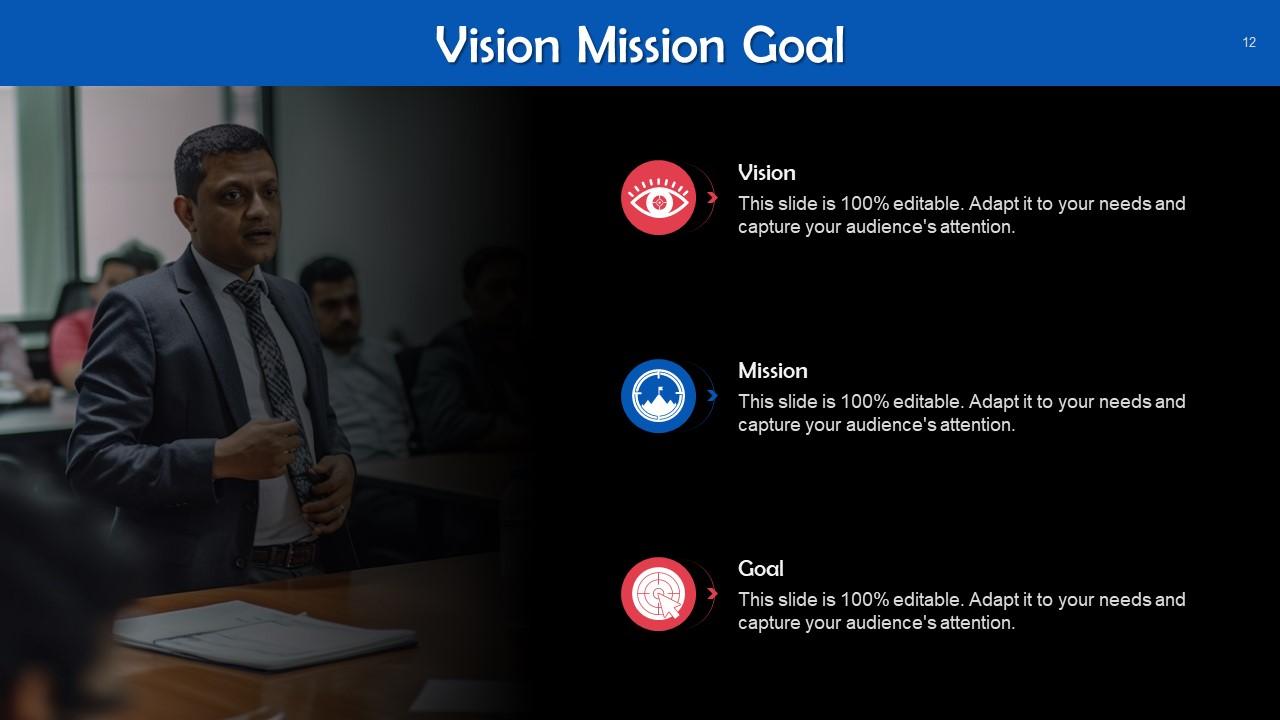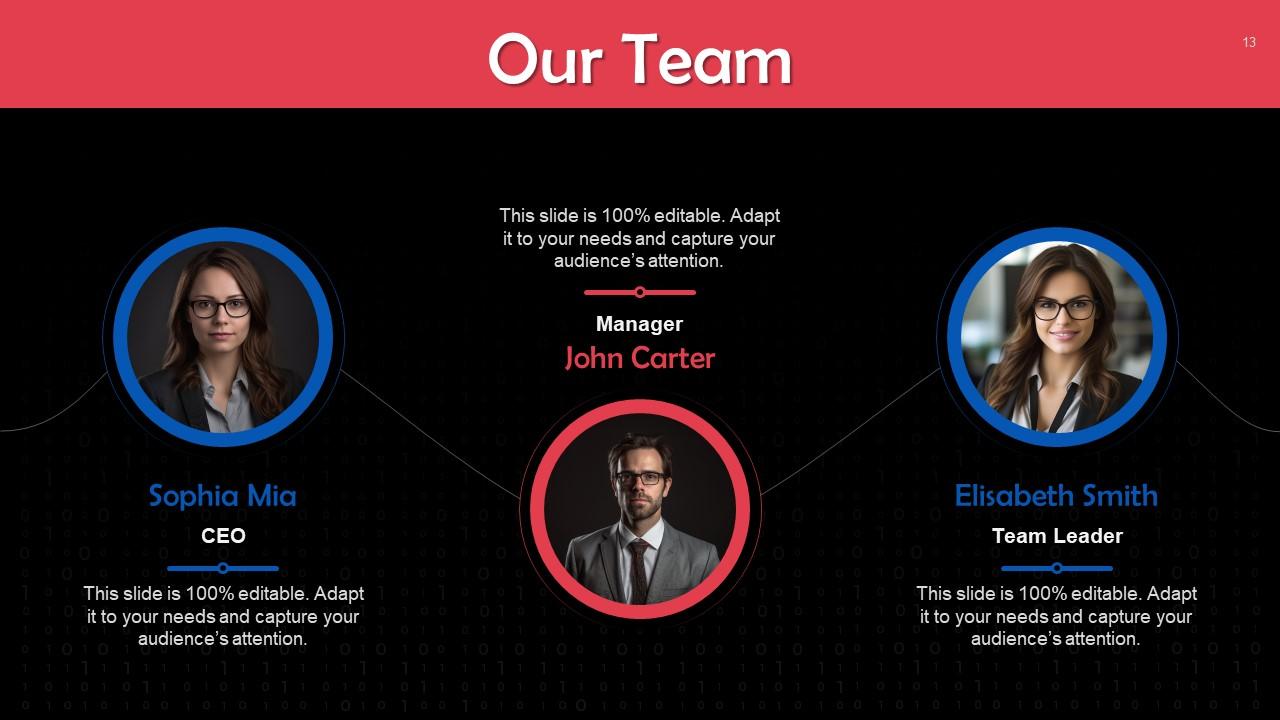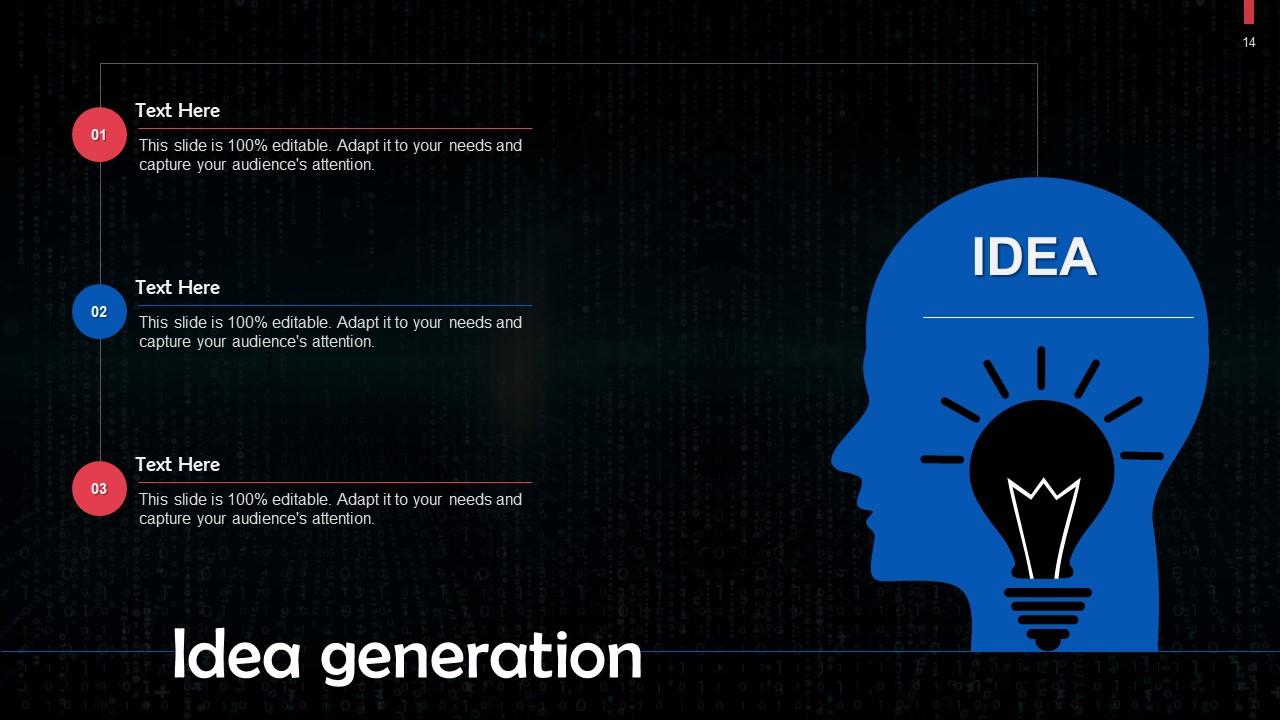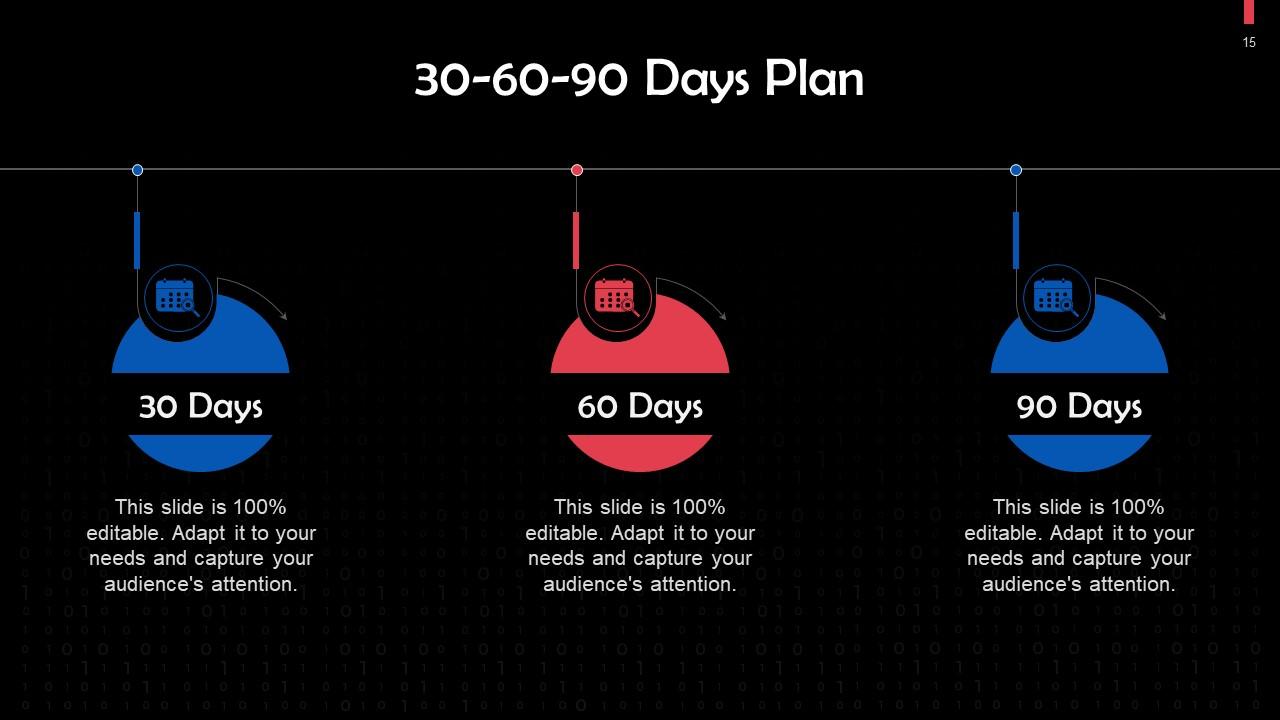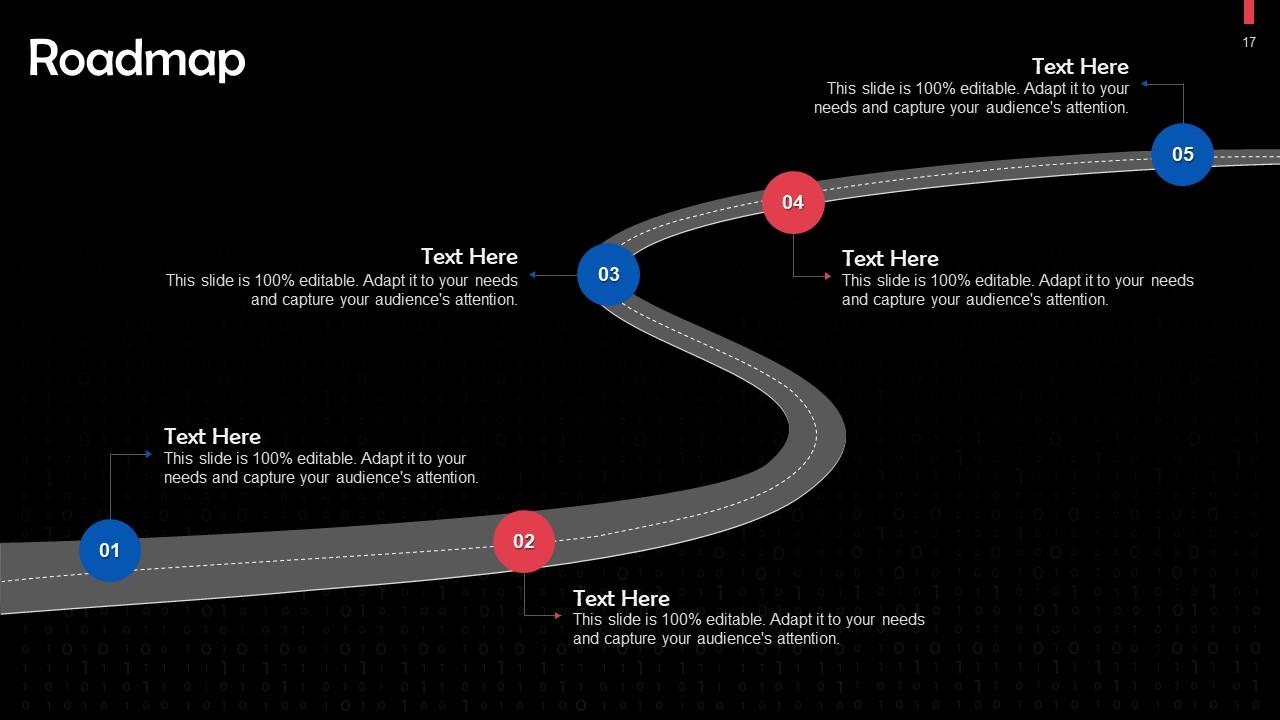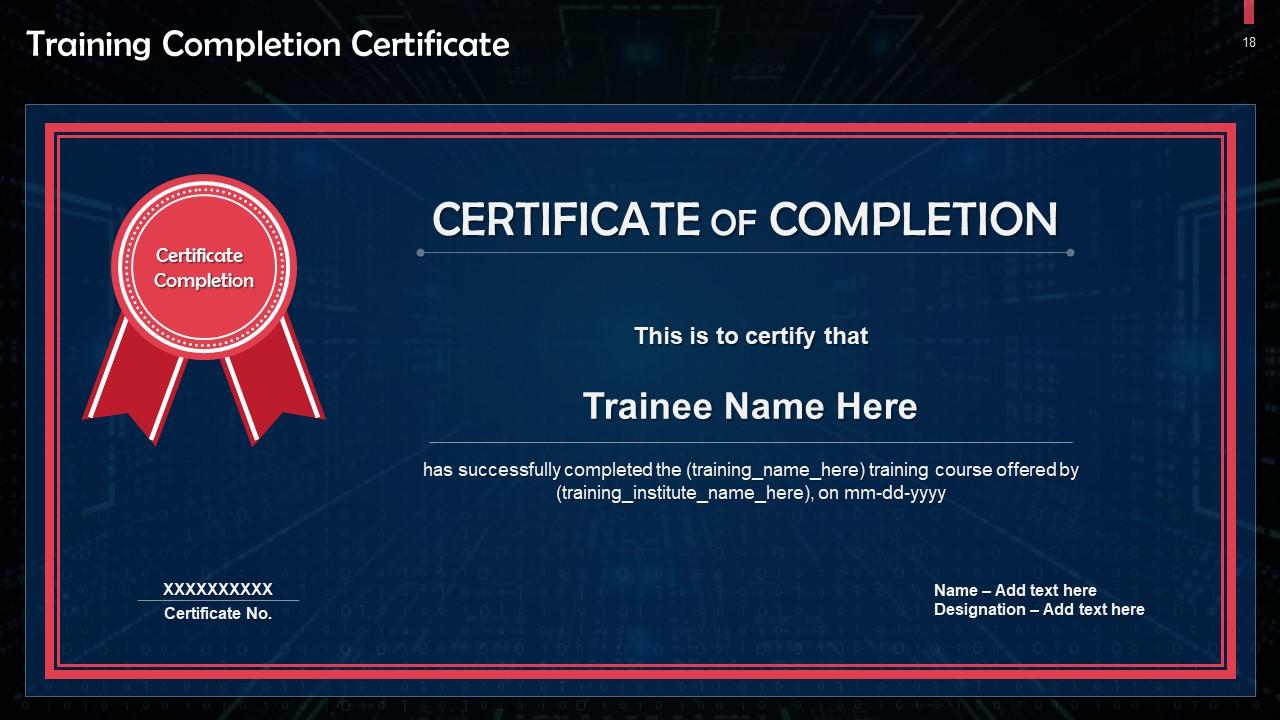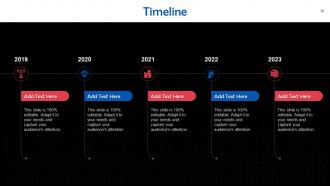Cloud Security For Cybersecurity Training Ppt
This set of PPT slides covers the concept of cloud security for enhanced cybersecurity.
This set of PPT slides covers the concept of cloud security for enhanced cybersecurity.
- Google Slides is a new FREE Presentation software from Google.
- All our content is 100% compatible with Google Slides.
- Just download our designs, and upload them to Google Slides and they will work automatically.
- Amaze your audience with SlideTeam and Google Slides.
-
Want Changes to This PPT Slide? Check out our Presentation Design Services
- WideScreen Aspect ratio is becoming a very popular format. When you download this product, the downloaded ZIP will contain this product in both standard and widescreen format.
-

- Some older products that we have may only be in standard format, but they can easily be converted to widescreen.
- To do this, please open the SlideTeam product in Powerpoint, and go to
- Design ( On the top bar) -> Page Setup -> and select "On-screen Show (16:9)” in the drop down for "Slides Sized for".
- The slide or theme will change to widescreen, and all graphics will adjust automatically. You can similarly convert our content to any other desired screen aspect ratio.
Compatible With Google Slides

Get This In WideScreen
You must be logged in to download this presentation.
PowerPoint presentation slides
Presenting Cloud Security for Cybersecurity. These slides are 100 percent made in PowerPoint and are compatible with all screen types and monitors. They also support Google Slides. Premium Customer Support available. Suitable for use by managers, employees, and organizations. These slides are easily customizable. You can edit the color, text, icon, and font size to suit your requirements.
People who downloaded this PowerPoint presentation also viewed the following :
Content of this Powerpoint Presentation
Slide 2
This slide gives information about cloud security. Cloud security is a set of practices and tools designed to address external and internal business security threats.
Slide 3
This slide talks about the importance of cloud security. As organizations shift to the cloud, understanding security requirements for keeping data safe has become essential.
Slide 4
This slide talks about the importance of cloud security. These are: Multitenancy, compliance, access management, misconfigurations, and lack of visibility.
Instructor’s Notes:
- Multitenancy: Public cloud environments store multiple client infrastructures under one roof, a cyber attack on other businesses can compromise your hosted services, referred to as collateral damage
- Compliance: Regulatory compliance management can sometimes become a source of confusion for companies using public or hybrid cloud deployments. General data privacy and security accountability still rest with the organization, and major dependence on third-party solutions to supervise this component can lead to costly compliance issues
- Access Management: While businesses may be able to control and limit access points across on-premises systems, enforcing the same level of restrictions in cloud settings can be difficult
- Misconfigurations: Misconfigurations can include leaving default administrative passwords in place or not setting appropriate privacy settings
- Lack of Visibility: As many cloud services are accessed outside of organization networks and via third parties, it is easy to lose track of who is accessing your data and how
Slide 5
This slide highlights types of cloud security solutions. These are: Data loss prevention, identity and access management, security information and event management, and business continuity and disaster recovery.
Instructor’s Notes:
- Data Loss Prevention: DLP solutions use a combination of data encryption, remediation alerts, and other preventative measures to safeguard all stored information
- Identity and Access Management: Identity and access management tools and services enable organizations to deploy policy-driven enforcement protocols for all users, whether accessing on-premises or through cloud-based services
- Security Information and Event Management: Security information and event management offers a comprehensive security solution that automates threat monitoring, detection, and response in cloud-based environments
- Business Continuity and Disaster Recovery: Disaster recovery solutions provide organizations with tools, services, and protocols necessary to expedite the recovery process of lost data and resume normal business operations
Slide 6
This slide tells you how to approach cloud security. The NIST has developed necessary steps that every organization can follow to self-assess security preparedness and apply adequate preventative and recovery security measures to their systems
Slide 7
This slide discusses the five pillars of cloud security framework. These are: Identify, protect, detect, respond, and recover.
Instructor’s Notes:
- Identify: This pillar entails identifying an organization's critical functions and cloud security risks could hamper those functions. For instance, if a company accepts payments from customers online, secure collection of this data is an essential or critical function; without it, the company cannot continue to sell its products
- Protect: This task focuses on limiting the impact of a security breach. The protect function outlines safeguards a business must have to ensure that critical functions and their relevant components, such as systems and employees, are safe
- Detect: This function aims to assess whether an organization's systems are compromised. This role analyzes how the organization's cybersecurity team determines a breach has occurred
- Respond: This function aims to minimize damage through rapid response. It defines the actions that the IT team can and should perform based on the type and severity of breach
- Recover: This function aims to recover any data that might have been lost due to a cloud security attack. It also deals with restoring services to critical systems that may have been damaged because of the breach
Cloud Security For Cybersecurity Training Ppt with all 27 slides:
Use our Cloud Security For Cybersecurity Training Ppt to effectively help you save your valuable time. They are readymade to fit into any presentation structure.
-
“Ample and amazing variety of templates available, really helpful for making professional PPT for day to day workings.”
-
“The presentation template I got from you was a very useful one.My presentation went very well and the comments were positive.Thank you for the support. Kudos to the team!”


